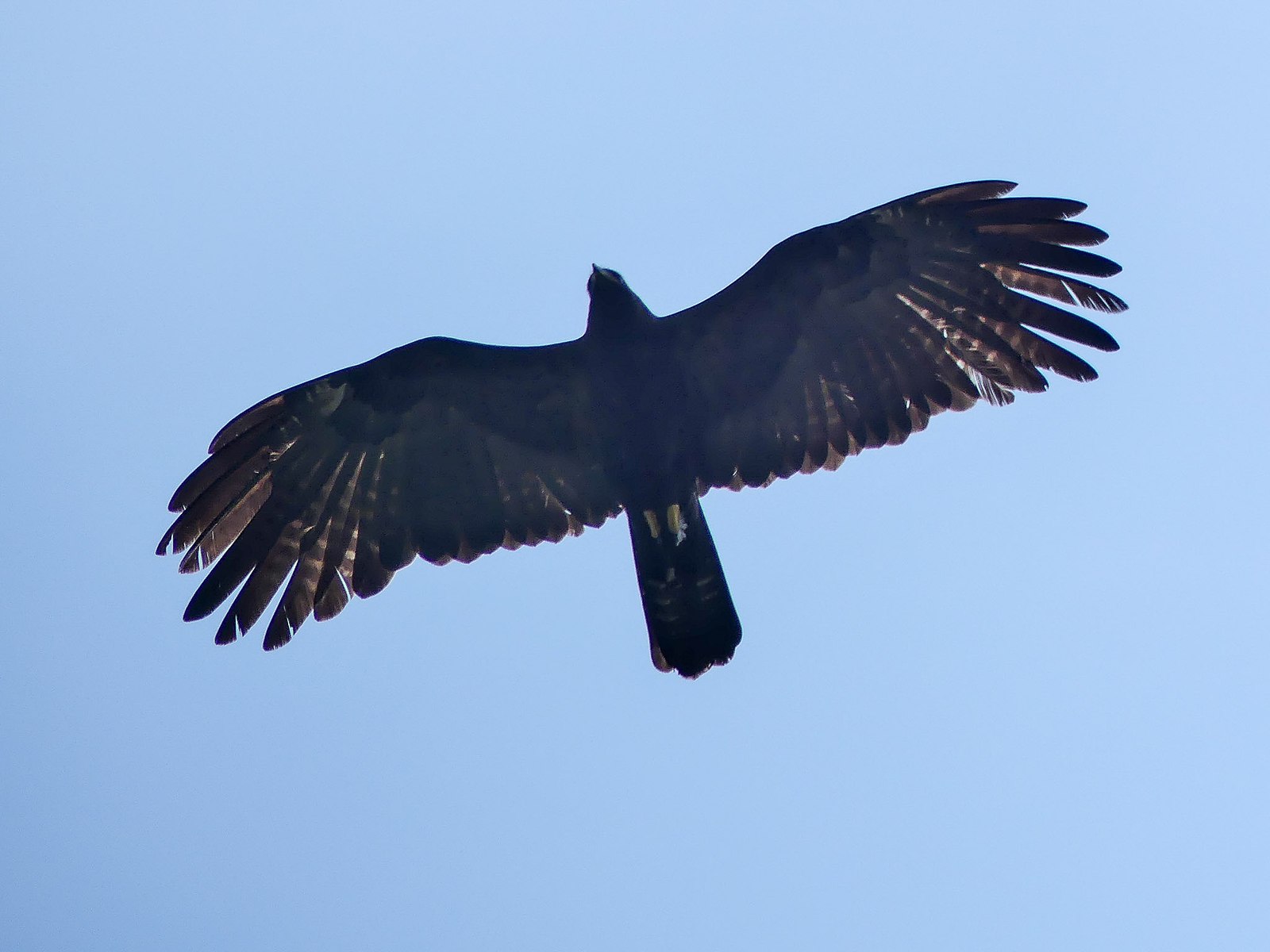Black eagles, like other birds, have beaks made of keratin, a protein also found in human fingernails. The beak grows continuously and is worn down through foraging and feeding. Birds adjust the shape of their beaks to their diet by wiping them on various surfaces.
Continuous Growth and Wear of Black Eagle Beaks
Black eagles, and other birds, have beaks that are made of keratin, the same material that makes up human fingernails. This means that the beak is constantly growing, just like our nails. As the black eagle forages and feeds, the beak is worn down through use.
The continuous growth and wear of the black eagle’s beak is a natural process that helps the bird maintain a sharp and functional beak. Without this wear and tear, the beak would continue to grow, eventually becoming too long and unwieldy for the eagle to use effectively.
Adjusting Beak Shape Through Wiping Behavior
 Image source: Black Eagle by Mike Prince
Image source: Black Eagle by Mike Prince
To compensate for the continuous growth of their beaks, black eagles and other birds have developed a behavior called “wiping.” This involves the bird rubbing its beak against various surfaces, such as branches, rocks, or even its own feathers.
This wiping behavior serves two main purposes:
-
Shaping the Beak: By rubbing the beak against different surfaces, the black eagle can help shape and maintain the optimal beak shape for its feeding needs. The abrasion from the wiping helps wear down the beak in specific areas, allowing the bird to adjust the shape as necessary.
-
Removing Debris: Wiping the beak also helps remove any debris or food particles that may have become stuck in the beak during feeding. This keeps the beak clean and functional.
Genetic Factors Influencing Beak Shape
The shape and size of a black eagle’s beak is not solely determined by the continuous growth and wear. Genetic factors also play a significant role in the beak’s morphology.
Research has shown that the mechanisms driving beak shape variation in birds can be described by a few relatively simple geometric transformations. This means that small changes in the genetic code can lead to significant differences in beak shape and size.
Additionally, the development of the beak is closely linked to the overall development of the bird’s skull. Pleiotropic associations, where a single gene affects multiple traits, can also contribute to the final shape of the avian beak.
Evolutionary History and Beak Diversity
The diversity of beak shapes and sizes observed in birds, including black eagles, is not just the result of adaptation to different feeding niches. The evolutionary history of a species also plays a crucial role in shaping the beak.
Birds have evolved a wide range of beak morphologies, from the sharp, hooked beaks of birds of prey to the long, slender beaks of hummingbirds. These variations are not only influenced by the bird’s current feeding ecology but also by the species’ ancestral lineage and the selective pressures that have shaped their evolution over time.
Conclusion
In summary, black eagles break their beaks as a result of the continuous growth and wear from foraging and feeding. They adjust the shape of their beaks to their diet through wiping behavior, and genetic factors, including evolutionary history and development, influence beak shape and variation.
Understanding the mechanisms behind beak formation and maintenance in black eagles and other birds provides valuable insights into the evolutionary adaptations and ecological relationships that have shaped these remarkable creatures.
References:
– https://www.ncbi.nlm.nih.gov/pmc/articles/PMC4868483/
– https://www.audubon.org/news/heres-why-birds-rub-their-beaks-stuff
– https://www.reptilegardens.com/scales-and-tales/article/the-real-story-of-an-eagle/

